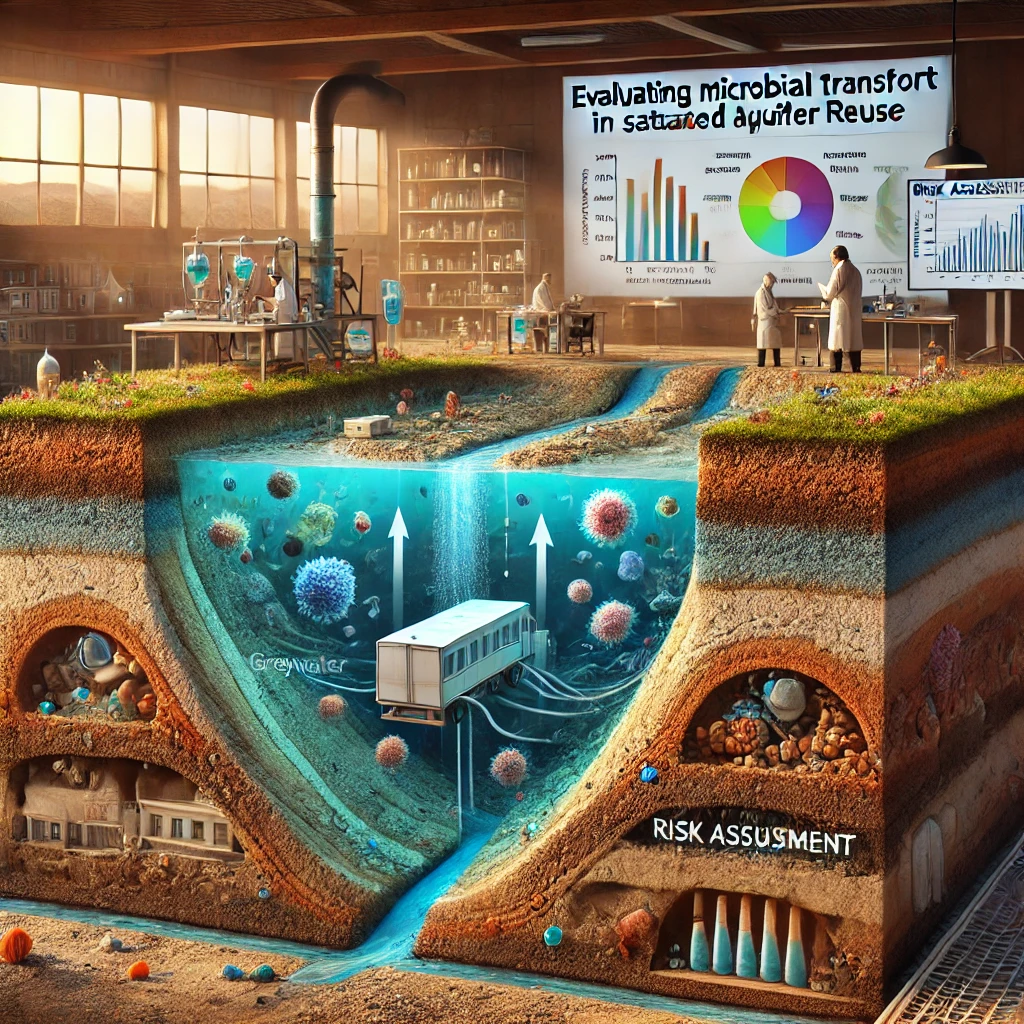Carcinogenic formaldehyde in U.S. residential buildings: Mass inventories, human health impacts, and associated healthcare costs
Highlights
Open Standards of the Health Product Declaration (HPD) enable mass estimates.
29,800 ± 5760 metric tons of formaldehyde were used to construct US homes nationwide.
In 2022, a new US residence contained an estimated 207 ± 40 g of formaldehyde.
Up to 4 years is required to safely vent formaldehyde from residential houses.
Avoidance of formaldehyde in US housing could avoid 645 ± 33 cancer cases per year.
Portable point-of-use photoelectrocatalytic device provides rapid water disinfection
Highlights
The e-DRINK was designed as a point-of-use device for water disinfection.
Photoelectrocatalytic treatment provides a 5-log removal of E. coli in 10 s.
Photoelectrocatalytic treatment provides a 2.6-log removal of Legionella in 60 s.
Photoelectrocatalysis overperforms photolysis, photocatalysis and electrocatalysis.
Photoelectrocatalytic treatment provides a 1-log removal of E. coli in 30 s in natural waters.
High resolution data visualization and machine learning prediction of free chlorine residual in a green building water system
Highlights
Real-time water quality data visualizations could inform the development of water quality management approaches.
Random forest outperformed time series LSTM machine learning (ML) models to predict free chlorine residual as an outcome variable.
Models accurately predicted free chlorine residual lapses 5 min in advance and up to 24 h in advance.
ML predictions outperform conventional statistical approaches to inform building water management plans.
Comparative Transport of Legionella and E. coli through Saturated Porous Media in a Two-Dimensional Tank
Highlights:
Bacterial Behavior in Aquifers: The transport of Legionella pneumophila and Escherichia coli through a simulated aquifer under saturated flow conditions was compared.
Experimental Setup: A 2-D tank filled with play sand was used to mimic an aquifer. The tank was disinfected and neutralized to ensure no chlorine residue.
Bacterial Transport: Bacterial cells were introduced into the tank at a controlled flow rate. Breakthrough times (when bacteria first appeared at specific depths) were recorded.
Legionella vs. E. coli: Legionella consistently had delayed breakthrough times compared to E. coli. This was attributed to the pleomorphic nature of Legionella.
Implications: The study provides evidence that both E. coli and Legionella can move through saturated aquifers. It also highlights the importance of cell characteristics in influencing bacterial transport in these environments.
Protecting Consumers And The Chemical Industry: A Policy Framework For Limiting The Production Of Halogenated Hydrocarbons
Highlights
Overuse of organohalides: Toxic halogenated hydrocarbons (organohalides) are causing significant healthcare costs and environmental issues.
Economic burden: The annual healthcare costs associated with organohalides are estimated to be US$340 billion in the U.S. and €150 billion in the European Union.
Industry impact: Chemical giants have faced billion-dollar lawsuits and bankruptcies due to the harmful effects of organohalides.
Proposed solution: HERO: The proposed policy is a novel economic incentive designed to reduce the use of organohalides.
How this policy works: By placing a health premium on new carbon-halogen bonds, this policy encourages the development and use of safer, alternative chemistries.
Benefits of adopting this policy: It is a proactive, non-limiting approach that promotes green chemistry, avoids new regulations, and supports consumer needs.
Positive outcomes: This framework promises to reduce the use of toxic chemicals, minimize healthcare costs, and align with sustainable development goals.
Prediction Of River Flows In Ungauged Basin Using Semi-Distributed Hydrologic Model
Highlights
Developed probability distribution functions (PDFs) for sensitive model parameters based on gauged basins.
Related these PDFs to the physical characteristics of ungauged basins to simulate streamflows.
Calibration (2000-2004): R² values ranged from 0.70 to 0.86; Nash-Sutcliffe Efficiency (NSE) from 0.62 to 0.79.
Validation (2005-2008): R² ranged from 0.58 to 0.73; NSE from 0.34 to 0.64.
Regionalization of model parameters significantly enhances the accuracy of streamflow predictions in ungauged basins.
The methodology was tested on two watersheds, demonstrating it as a viable approach for hydrologic modeling in data-limited basins.
Temporal Hydrologic Variations in San Jacinto River Basin with Major Land Use and Land Cover Changes
Highlights
Model Setup: The Arc-SWAT 2012 model was used to analyze the San Jacinto River Basin, focusing on Cypress, Texas, using 2006 LULC data.
LULC Changes: Significant increases in residential and industrial areas and decreases in forested areas were observed between 2006 and 2011.
Hydrologic Impacts: Urbanization and deforestation led to increased surface runoff and decreased infiltration, resulting in an overall increase in streamflow.
Rainfall and Temperature: Lower rainfall and higher temperatures during the August 2011-2015 period contributed to decreased streamflow.
Conclusion: The study highlights the significant impact of urbanization and deforestation on the hydrologic behavior of the region, emphasizing the need for sustainable land use practices and water resource management.
A wastewater-based epidemiology and material investigation framework to track phthalate exposure from commonly used building materials
Highlights:
Phthalates, commonly used in building materials, pose significant health risks including reproductive abnormalities and potential carcinogenicity.
An analysis of the Health Product Declaration (HPDC) repository revealed that a substantial number of building products contain phthalates, particularly doors and windows.
Dust inhalation from phthalate-containing building materials poses a quantifiable risk to human health.
Wastewater-based epidemiology (WBE) is a viable and cost-effective method for monitoring phthalate exposure.
Safer alternatives to phthalates, such as cardanol and epoxidized soybean oil, are available and should be adopted to mitigate health risks.
Evaluating Microbial Transport in Saturated Aquifers for Greywater Reuse through Integrated Experiments, Modeling, and Risk Assessment
Highlight:
Contamination Risks: Up to 97.5% of U.S. wells show fecal contamination, posing public health risks, especially in groundwater-reliant areas like Arizona.
Research Structure: The study covers lab experiments, microbial transport modeling, and risk assessments for greywater reuse.
Microbial Spread: Simulations quantify microbial transport in aquifers, helping manage contamination risks in greywater systems.
Health Risks: Legionella exposure risks, especially in summer, were assessed using dose-response models and aerosol contamination analysis.
Risk Mitigation: A tolerable infection risk of 5.88 × 10⁻⁶ per person/year was identified, underscoring the need for better greywater management
Identifying optimal sampling points in wastewater networks for SARS-CoV-2 to inform efficient monitoring efforts and public health decision-making
Highlights:
Effective wastewater-based surveillance: This study demonstrates the importance of wastewater-based epidemiology (WBE) for monitoring SARS-CoV-2 in communities.
Optimal sampling point selection: By using the Storm Water Management Model (SWMM), the study identified the most effective locations for sampling wastewater to detect the virus.
Targeted sampling for improved results: Targeted sampling based on population density and key infrastructure points was found to be more efficient than random sampling.
Integration of relevant data: The study successfully integrated data on wastewater flow rates, population density, and land use patterns to inform sampling point selection.
Enhanced public health decision-making: The optimized sampling strategy can provide valuable data to inform public health interventions and decision-making regarding the COVID-19 pandemic.
Cost-effective and non-invasive monitoring: Wastewater-based surveillance offers a cost-effective and non-invasive alternative to traditional testing methods.










